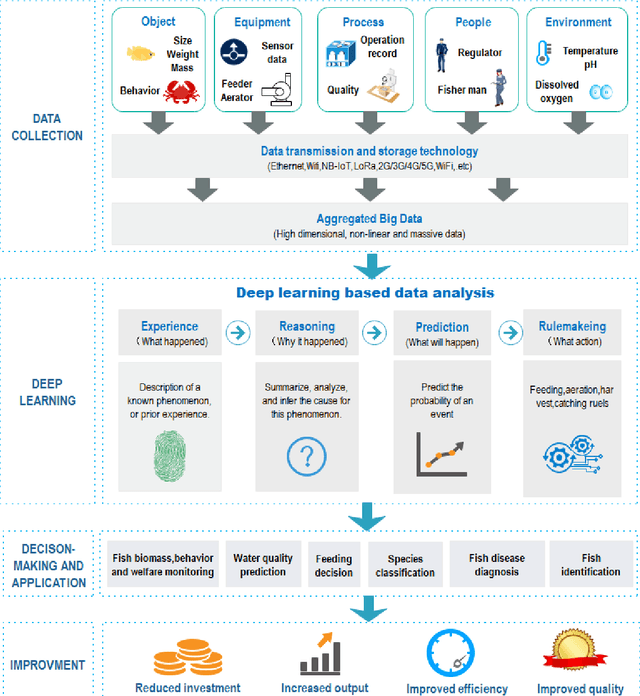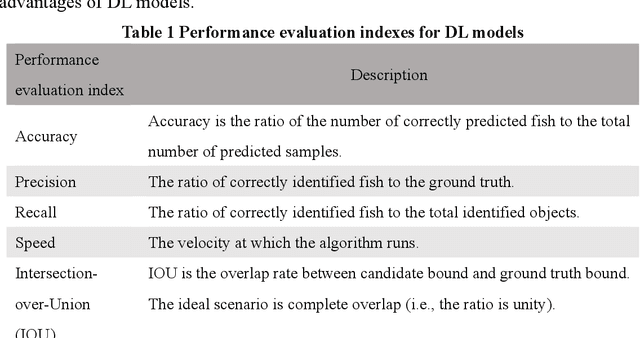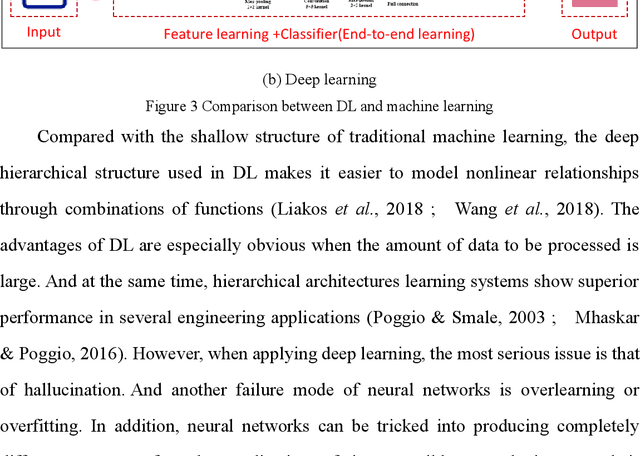Qinfeng Gao
Deep learning for smart fish farming: applications, opportunities and challenges
Apr 06, 2020



Abstract:With the rapid emergence of deep learning (DL) technology, it has been successfully used in various fields including aquaculture. This change can create new opportunities and a series of challenges for information and data processing in smart fish farming. This paper focuses on the applications of DL in aquaculture, including live fish identification, species classification, behavioral analysis, feeding decision-making, size or biomass estimation, water quality prediction. In addition, the technical details of DL methods applied to smart fish farming are also analyzed, including data, algorithms, computing power, and performance. The results of this review show that the most significant contribution of DL is the ability to automatically extract features. However, challenges still exist; DL is still in an era of weak artificial intelligence. A large number of labeled data are needed for training, which has become a bottleneck restricting further DL applications in aquaculture. Nevertheless, DL still offers breakthroughs in the handling of complex data in aquaculture. In brief, our purpose is to provide researchers and practitioners with a better understanding of the current state of the art of DL in aquaculture, which can provide strong support for the implementation of smart fish farming.
 Add to Chrome
Add to Chrome Add to Firefox
Add to Firefox Add to Edge
Add to Edge